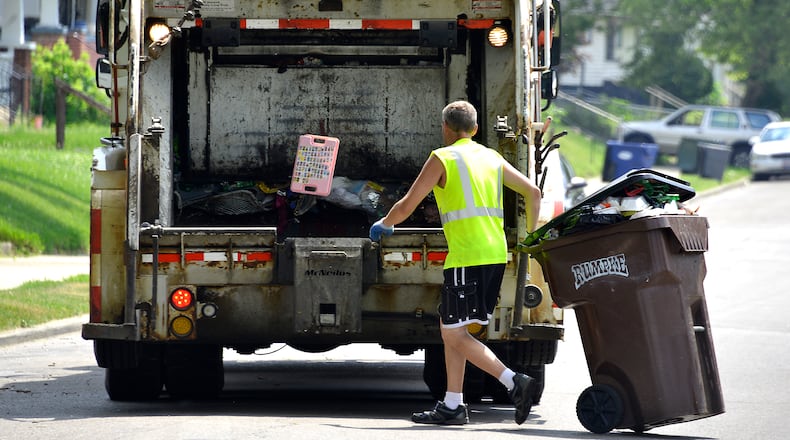RELATED: ‘Too many people have been hurt’ by not moving over for cops, FOP says
The proposal to place a “move over” requirement on drivers encountering trash trucks with flashing lights — as currently required for public safety vehicles — was approved by the House Government Accountability and Oversight Committee Wednesday. It was approved in October by the Senate, 32-0.
“People just don’t pay attention,” said Lawson, who was then 25 and working in the family waste business when he was hit. “We try to prepare and keep ourselves safe out there, but without this law they just come flying up on the trucks anyway.”
Credit: Chris Stewart
Credit: Chris Stewart
The new law would require drivers to proceed with caution and change to a lane away from a waste collection vehicle if traveling on a roadway with multiple lanes in the same direction. And regardless of the lane count, a driver must proceed with caution and maintain a speed safe for road, weather and traffic conditions.
Under the proposal, a driver found to violate the move-over requirement can face a minor misdemeanor moving violation charge and a fine up to $300 plus court costs.
RELATED: 2 injured in crash between car, trash truck in Clay Twp.
Lawson, now 47 and living in Germantown, was injured on Stroop Road, which has two lanes running each direction.
James Profitt, a Solid Waste Association of North America safety ambassador who lives in Miami Twp., told Lawson’s story to legislators last year.
“This incident occurred on a four-lane road and could have been prevented had the driver simply slowed down and moved over,” Profitt wrote. “This is only one of many tragedies that have occurred in the waste industry.”
A single garbage truck can make 600-900 stops a day, according to the National Waste and Recycling Association. Similar legislation has passed in 16 states including Illinois, Indiana, Kentucky, New York and West Virginia, according to the organization.
PHOTOS: Car hits garbage truck in Springfield
Refuse and recycling collectors have the fifth highest death rate among civilian occupations in the country, according to the Bureau of Labor Statistics. In 2016, 31 died — about two-thirds the result of transportation incidents.
“If we can save one life out there or even keep one person from getting paralyzed, then we’ve done what we needed to do,” said Lawson.
About the Author


